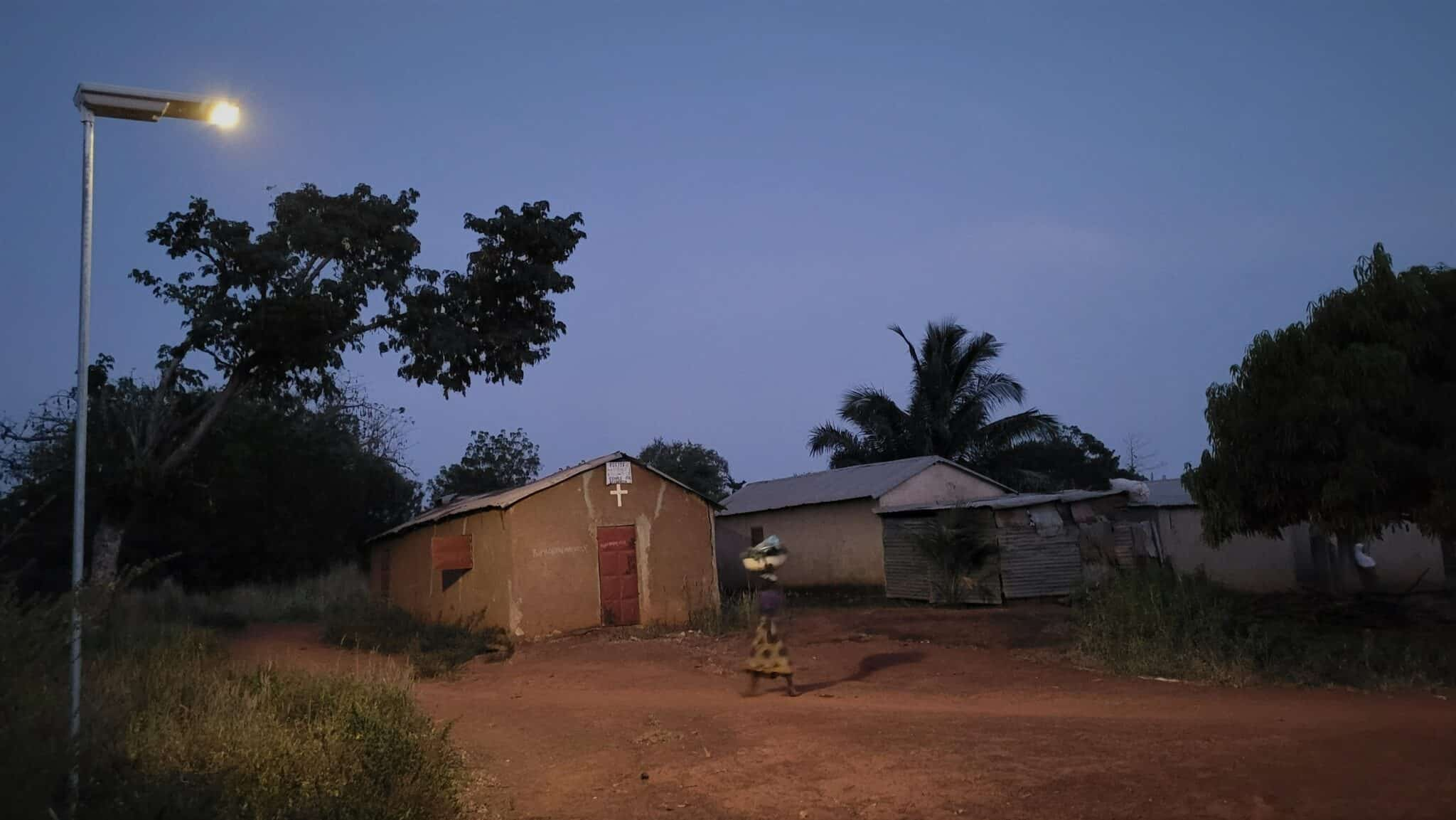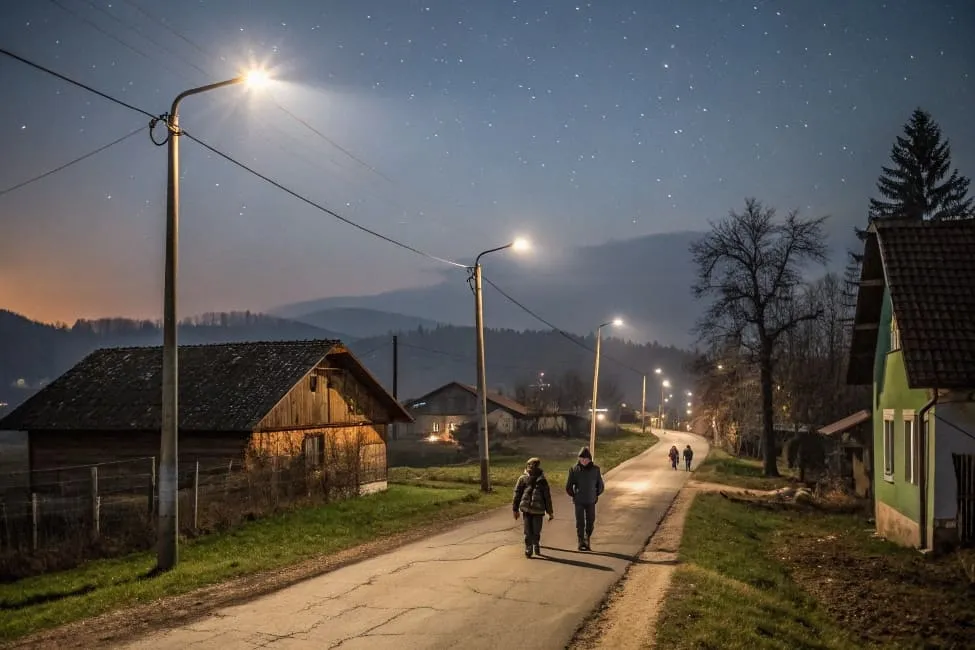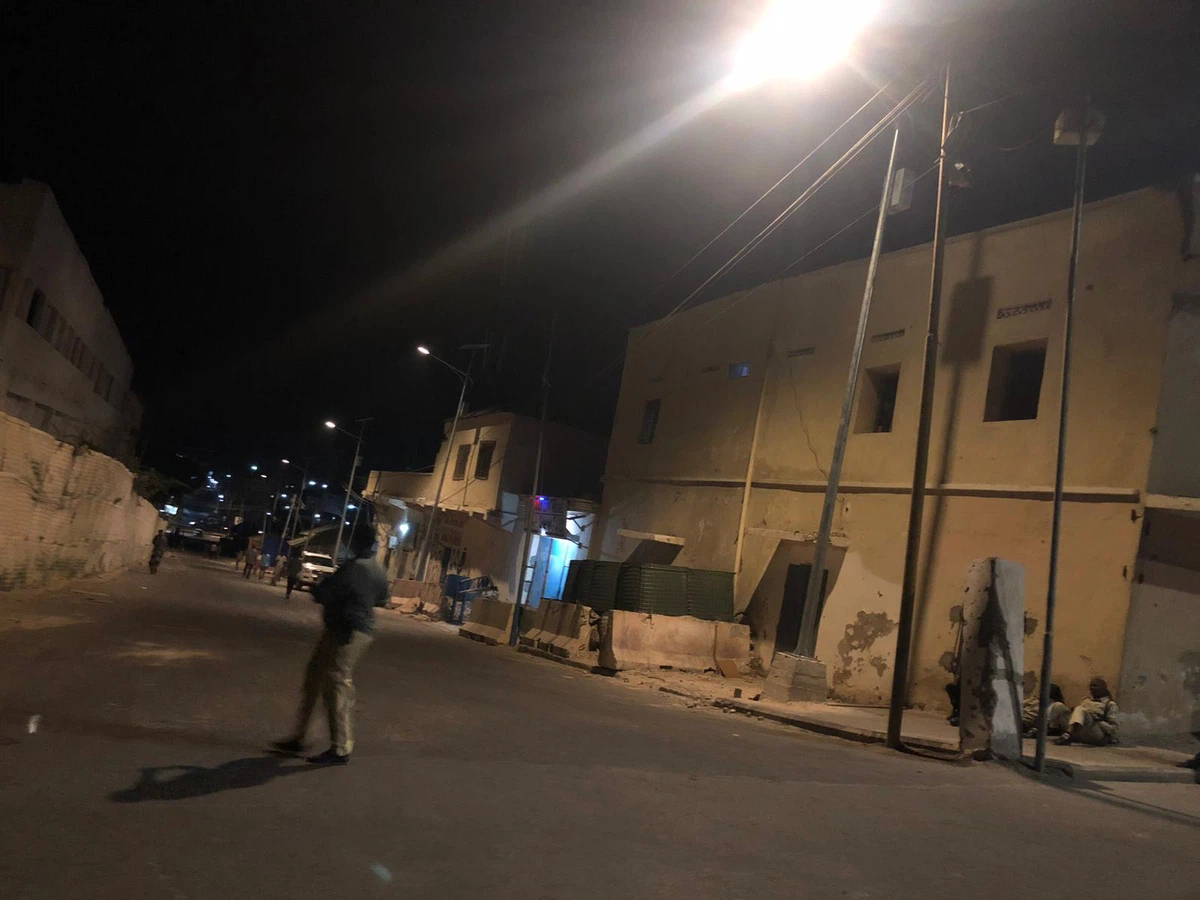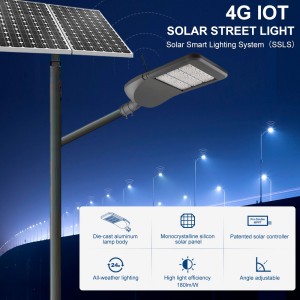Rural Safety and the Role of Solar Street Lighting
Public lighting is more than infrastructure; it is a foundation of personal safety, economic development, and community well-being. In rural areas, particularly in developing countries or remote regions, the absence of reliable street lighting contributes to accidents, crime risks, and social inequality. Installing solar street lights provides a way to eliminate dark spots, improve rural mobility, and reduce the burden of electricity infrastructure costs.
Unlike conventional grid-powered systems, solar LED street lights with pole operate independently. Each lamp integrates a solar panel, battery, pro-double MPPT solar charge controller, and outdoor LED light fixture, allowing villages without stable electricity to gain reliable illumination. This independence, combined with modern control technology, ensures not only energy efficiency but also safety guarantees for villagers and their environment. Contact us for a free DIALux street lighting solution.
How Solar Street Lights Protect Personal Safety?
Safer Night Travel
Rural roads are often curved, narrow, and lack reflective signs. Without lighting, night travel becomes dangerous for pedestrians, cyclists, and motorcyclists. By installing solar LED street lights, roads are consistently illuminated, reducing accident rates significantly. Properly designed light poles (6–9 meters) ensure uniform light distribution without glare, preventing shadow areas where accidents or assaults may occur.
Reduced Crime and Social Risks
Darkness creates opportunities for theft, harassment, and other crimes. Studies in urban areas have proven that well-lit environments reduce nighttime crime by 20–30%. In villages, where police presence is limited, reliable solar street lighting acts as a crime deterrent. Women, children, and the elderly especially benefit from being able to walk safely in public spaces at night.
Safe Community Gathering
Villages often gather for cultural or social events in the evenings. With solar street lights installed in community centers, schools, and marketplaces, activities can extend safely after sunset. This strengthens community cohesion and improves villagers’ quality of life.
Advantages of Solar Street Lights for Villagers
Energy Independence: Villagers are not dependent on unstable or unavailable grid power. Each solar street light with a battery generates its own energy, ensuring continuous operation even during regional power outages.
Low Maintenance & Cost Savings: The LiFePO₄ batteries in modern solar lights last 8–12 years, and high-efficiency LED fixtures consume little energy. Villagers do not need to pay electricity bills, and maintenance costs are minimal.
Health and Environmental Benefits: By replacing kerosene lamps or diesel generators, solar street lights reduce indoor/outdoor air pollution. Children can study under clean lighting at night, improving education outcomes without harmful smoke exposure.
Community Empowerment: Solar street lighting extends productive hours for small businesses, roadside vendors, and farmers. Villagers can work longer, improving local incomes and creating a stronger rural economy.
Solar Street Lights: Benefits to Local People & Government
Personal Safety: Villagers travel safely at night with reduced risks of accidents and crime.
Education: Students study after sunset under reliable light, improving literacy and exam performance.
Health: No reliance on kerosene lamps or unsafe light sources reduces respiratory diseases.
Social Life: Night markets, festivals, and gatherings continue safely into the evening, strengthening community bonds.
Economic Growth: Extended hours for trade and services generate new income streams.
Cost-Effective Infrastructure: No need for expensive trenching, cabling, or transformers. Solar street lights are a one-time investment with low lifecycle costs.
Public Safety Improvement: Lower crime rates and accident reduction improve community trust in governance.
Environmental Responsibility: Transition to renewable energy aligns with national carbon neutrality goals.
Solar Street Light Case Example: Rural Revitalization in Action
In the northern remote areas of China, where long winters bring freezing temperatures and limited daylight hours, building and maintaining traditional grid-powered street lighting is not only technically challenging but also economically unsustainable. Extending power lines across rugged terrain can cost more than the infrastructure itself, and frequent snowstorms often lead to power outages that leave entire villages in the dark.
Nighttime accidents dropped by 40%. Roads that were previously treacherous for pedestrians, cyclists, and tractors became safely passable after dark, even in winter conditions. Farmers could return home from distant fields or markets without fear of falling or collisions.
Street crime reduced by 30%. The presence of consistent lighting discouraged theft, harassment, and other unlawful activities. Villagers, particularly women and the elderly, reported feeling safer walking alone at night, which strengthened community confidence and mobility.
The local government saved 60% in installation and operation costs compared to grid-powered solutions. With no trenching, cabling, or electricity bills required, most of the expenses were limited to one-time procurement and periodic maintenance. These savings freed up funds for other rural development projects such as healthcare and education.
Beyond the numbers, the project generated social and economic ripple effects. Evening markets began to flourish as villagers could safely trade after sunset. Children used the well-lit roadsides to study outdoors during power cuts at home. Community events, festivals, and cultural activities extended later into the evening, enriching social life.
This case illustrates how solar LED street lights with low-temperature batteries do more than illuminate roads — they transform rural safety, empower communities, and deliver economic efficiency, making them a cornerstone of modern rural development policy.
Lighting the Path to Safer Villages
Rural development cannot be achieved without addressing safety and accessibility at night. By adopting solar LED street lights with pole and battery, villages gain reliable illumination powered by clean energy. The integration of MPPT controllers, smart dimming, and advanced BMS systems ensures that these lights operate safely and efficiently, even in challenging climates.
In essence, rural solar street lights are not just lighting equipment — they are safety infrastructure, development enablers, and symbols of progress. By guaranteeing safety through control technology and delivering real socio-economic benefits, solar street lights illuminate more than roads — they illuminate the future of rural communities.
Post time: Sep-25-2025







